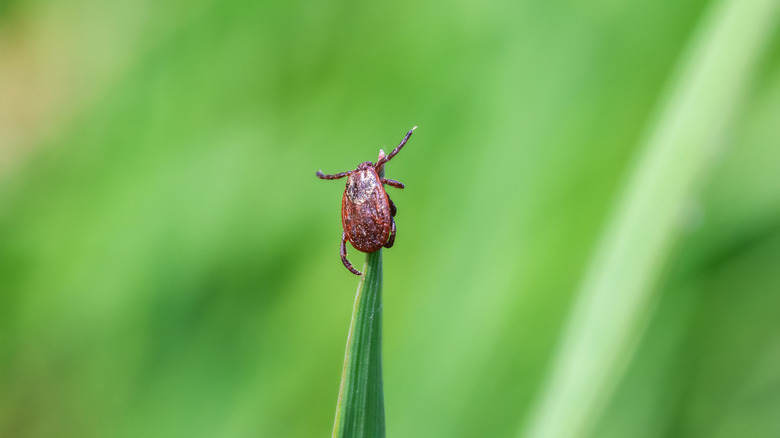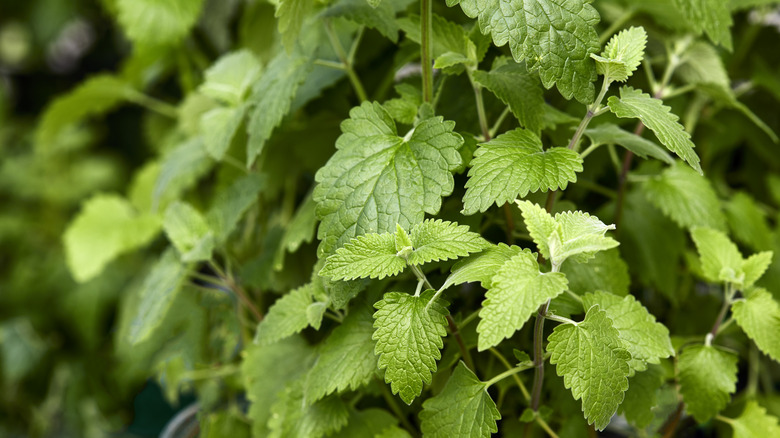The Fast-Growing Herb That Might Help Keep Your Yard Tick-Free
Warmer temperatures mean more time spent in your backyard with family and friends. Unfortunately, warmer temperatures also bring about unwanted guests, including ticks. These tiny parasites inhabit all regions of the U.S., and they are generally most active between April and September. Spraying pesticides might decrease tick infestations in your outdoor spaces. However, not everyone wants to use chemical solutions. In such cases, you might consider planting herbs like catnip (Nepeta cataria) that purportedly help repel ticks, but it's important to know that studies supporting catnip as tick repellents in a yard are lacking.
You might know of catnip as an herb that cats love, but the plant itself has many other notable attributes to consider. Many of these are also among the reasons why you should grow catnip even if you don't have cats. Catnip itself is a perennial plant known for its greenish-silvery colored heart-shaped leaves and attractive blue flowers. It's also known as a weedy type of herb, as it can quickly take over gardens when left alone. In fact, catnip can grow up to 3 feet tall in some cases, making it desirable for gardeners who want to plant something fast. Aside from cats loving the plant, some people also use catnip leaves to make teas and for flavorings in dishes. Planting catnip around your yard may also be just one part of a pest management strategy to help deter ticks from hanging out in outdoor spaces.
How catnip might help deter ticks from your yard
Catnip produces minty leaves that are edible, as well as fragrant flowers that also attract butterflies. It turns out that the features of catnip you might appreciate as a gardener are possibly intolerable to specific insects such as aphids. As such, you might wonder whether catnip could be a solution for repelling other pests, including ticks. So far, the results of scientific studies suggest that catnip in essential oil form may possibly help repel ticks when applied to human skin thanks to the active component nepetalactone. However, more studies are needed to determine whether successfully growing a catnip plant outdoors could be effective in deterring ticks from entering yard altogether.
Overall, catnip is considered low maintenance, and it can be grown in USDA Hardiness Zones 3 to 8. Like other plants of the mint family, catnip has weedy qualities that can cause it to grow and spread rather quickly. To help mitigate these effects, you might consider planting catnip in planters to help contain it. Catnip also requires full sun as well as moist, well-draining soil. If you do decide to plant catnip to help repel ticks, consider placement around the perimeter of your yard as a barrier. Any tick management strategy should also include keeping your lawn maintained, removing leaf litter and woodpiles, and to keep furniture and playsets away from wooded areas on your property. Such steps can help safeguard your property as scientists determine whether tick season is actually worse this year.

